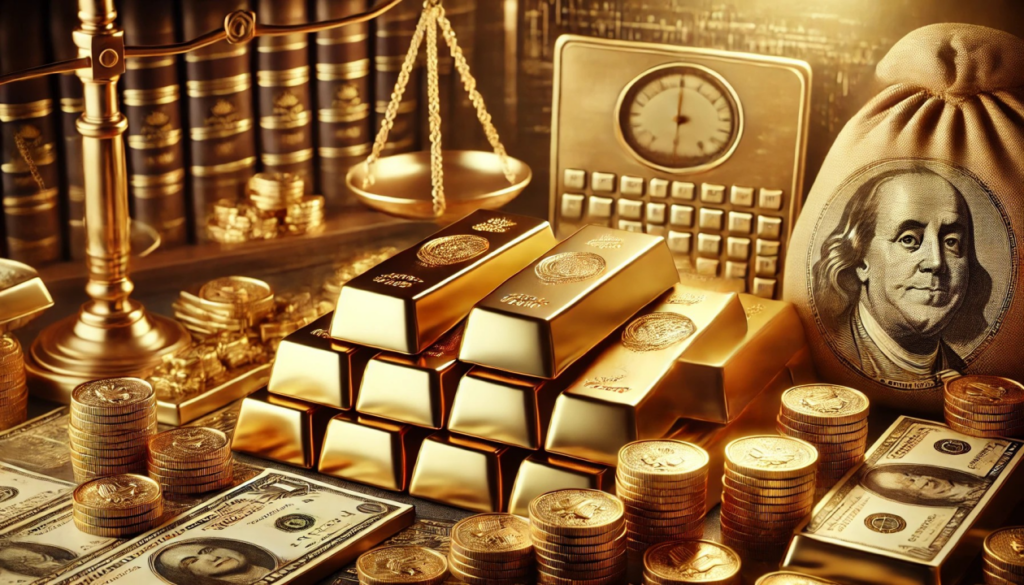 By Ryan McMaken
By Ryan McMaken
Historically—as during the days of the classical gold standard—central banks maintained stocks of gold to facilitate the conversion of gold-backed national currencies. Those days are long gone, but in modern times, many central banks continue to own gold, and many central banks buy gold as part of their open-market operations. For example, in his article last week— ”Central banks purchase gold to offset their own money destruction“—Daniel Lacalle writes:
The rising purchases of gold by central banks are an essential factor justifying the recent increase in demand for the precious metal. Central banks, especially in China and India, are trying to reduce their dependence on the dollar or the euro to diversify their reserves.
The US’s central bank, the Federal Reserve, is not among these banks buying gold. Obviously, the Fed has no interest in buying up gold as a means of “de-dollarization.” Moreover, the Fed is presently concerned with purchasing more dollar-denominated government debt to keep interest rates low on the Federal government’s huge deficits.
But we must also note that another reason the Fed isn’t buying gold is that the Fed hasn’t been in the gold-owning business for a very long time.
That is, the Fed has owned no gold since 1934, when the Fed handed over all its gold in exchange for gold certificates. This is how the Fed’s Board of Governors summarizes the situation:
The Federal Reserve does not own gold.
The Gold Reserve Act of 1934 required the Federal Reserve System to transfer ownership of all of its gold to the Department of the Treasury. In exchange, the Secretary of the Treasury issued gold certificates to the Federal Reserve for the amount of gold transferred at the then-applicable statutory price for gold held by the Treasury.
Gold certificates are denominated in U.S. dollars. Their value is based on the statutory price for gold at the time the certificates are issued. Gold certificates do not give the Federal Reserve any right to redeem the certificates for gold.
The statutory price of gold is set by law. It does not fluctuate with the market price of gold and has been constant at $42 2/9, or $42.2222, per fine troy ounce since 1973. The book value of the gold held by the Treasury is determined using the statutory price.
Although the Federal Reserve does not own any gold, the Federal Reserve Bank of New York acts as the custodian of gold owned by account holders such as the U.S. government, foreign governments, other central banks, and official international organizations. No individuals or private sector entities are permitted to store gold in the vault of the Federal Reserve Bank of New York or at any Federal Reserve Bank.
A small portion of the gold held by the U.S. Treasury (roughly $600 million in book value)–about five percent–is held in custody for the Treasury by the Federal Reserve Banks, as fiscal agents of the United States. The vast majority of this gold is located in the vault at the Federal Reserve Bank of New York, and a very small portion is on display in several Federal Reserve Banks. The remaining 95 percent of U.S. Treasury gold ($10.4 billion in book value) is held in custody for the Treasury by the U.S. Mint.
It is possible to imagine that the Fed could start buying gold, but it’s hard to see why the Fed would be motivated to do so.
Moreover, given that the Fed’s gold certificates have essentially no connection to the actual market price of gold, changes in the price of gold have virtually no effect on the value of the Fed’s assets.
The only way gold prices would become relevant to the Fed’s portfolio would be for Congress to change the statutory price of gold from $42.2222. If the Fed wanted to actually take possession of that gold, Congress would also have to authorize the Fed to redeem its certificates in gold.
This is all very unlikely barring a very big change in the ideology of the ruling regime. Indeed, barring said ideological change, I suspect that in a true crisis, the Fed’s extremely tenuous claim to owning its pre-1934 gold stockpile would be null and void altogether. If the Treasury finds itself truly strapped for cash, Congress would only have to declare the Fed’s gold certificates permanently unredeemable. Or, the Treasury could simply buy back the gold certificates at the ridiculously low statutory price. Then there would be no doubt about who owns that gold. The Treasury could then simply sell off all the gold to Wall Street banks in exchange for dollars that would go to luxury hotels for illegal immigrants or more bombs for the State of Israel.
This article was written by Ryan McMaken and originally published at the Mises Institute.
Sourced from Money Metals
Become a Patron!
Or support us at SubscribeStar
Donate cryptocurrency HERE
Subscribe to Activist Post for truth, peace, and freedom news. Follow us on Telegram, HIVE, Minds, MeWe, Twitter – X and Gab.
Provide, Protect and Profit from what’s coming! Get a free issue of Counter Markets today.

Be the first to comment on "The Federal Reserve Does Not Own Gold"